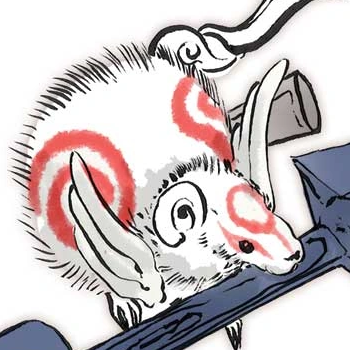So, say I get a set of chromosomes from my Mum which contains the X chromosome and the same from my Dad, but with the Y chromosome. I now have two sets of the same 22 chromosomes, plus an X and a Y.
For chromosome number one for example, is everything from my Dad’s side activated? My Mum’s? Or is is a random selection of genes within each chromosome?
And does the X chromosome do anything for me, or is it turned off, and only used if I pass it on to the next generation?
Follow up question: I believe that women actually recombine their X chromosomes when passing these on, but men can’t recombine X and Y. So everything on your Dad’s side stays the same. Does this have any impact? For example are you more likely to inherit genetic defects from your Dad’s side?
Everyone is talking about dominant and recessive genes, so I just want to clarify a couple things.
The way your body directly uses genes is as a blueprint to construct proteins. Your cells are always producing proteins from the genes in all your chromosomes. It has complex ways of regulating how much of each it produces, but your body doesn’t care what chromosome it’s coming from. Once an embryo is fertilized, there’s really no distinction between “mom” chromosomes or “dad” chromosomes, as far as the embryo and its protein machinery are concerned.
“Dominant” and “recessive” characterization is about how those proteins affect your body at the macro scale, not whether your body actually uses the gene and produces its proteins – it always does that. For example, brown hair is a dominant trait, and blonde is recessive. But this is because producing any amount of brown pigment will make your hair brown, regardless of what other pigments you’re making, simply because it’s darker. Literally the same as combining blonde and brown paint. It has nothing to do with whether the genes are actually being expressed – the brown hair gene doesn’t stop the blonde hair gene from making its pigments.
Thank you for clarifying those misconceptions about what recessive and dominant are getting at. A gene isn’t really dominant or recessive. A phenotype (some trait in the organism like blue eyes or a certain disease) can be dominant or recessive though and results from changes in a gene. The same gene could have many different possible mutations, some with dominant effects, some with recessive effects, or some with no effects, depending on the change in the gene and the phenotype.
To go further on that, many recessive diseases are because just one functional copy of many genes are fine from your body’s perspective. Many recessive diseases are due to loss of function of a gene or its protein product, a gene that for a variety of potential reasons no longer leads to a functional protein. Often your body can get by with just one working gene making protein, though both gene copies are generally always being transcribed and trying to be turned into functional protein.
One big exception to this is the x chromosome. Males only have one x and have a y instead of a second x. The y is very tiny and has very few genes compared to the x, quite different from other chromosome pairs which generally just have copies of all the same genes on each other. Early in embryo development for xx individuals, one of the x chromosomes is generally inactivated and not expressed very much, otherwise xx individuals would have double the gene products of all those different genes compared to males, which the body is not expecting for x genes like it does for all the other genes that have a second copy.
https://en.m.wikipedia.org/wiki/X-inactivation
If you go even further you also get into the idea of penetrance. A gene codes for a protein, but that protein doesn’t exist in isolation, it interacts with lots of other proteins coded by other genes in the body, plus the environment. So for some genetic changes it might be a 100% chance at leading to a certain phenotype (like a disease or a specific trait), or it could be less, like only 70% or 30% chance or something of someone with that change getting that trait, even if it’s still “dominant” (meaning only one gene copy with that change is needed to express the trait).



